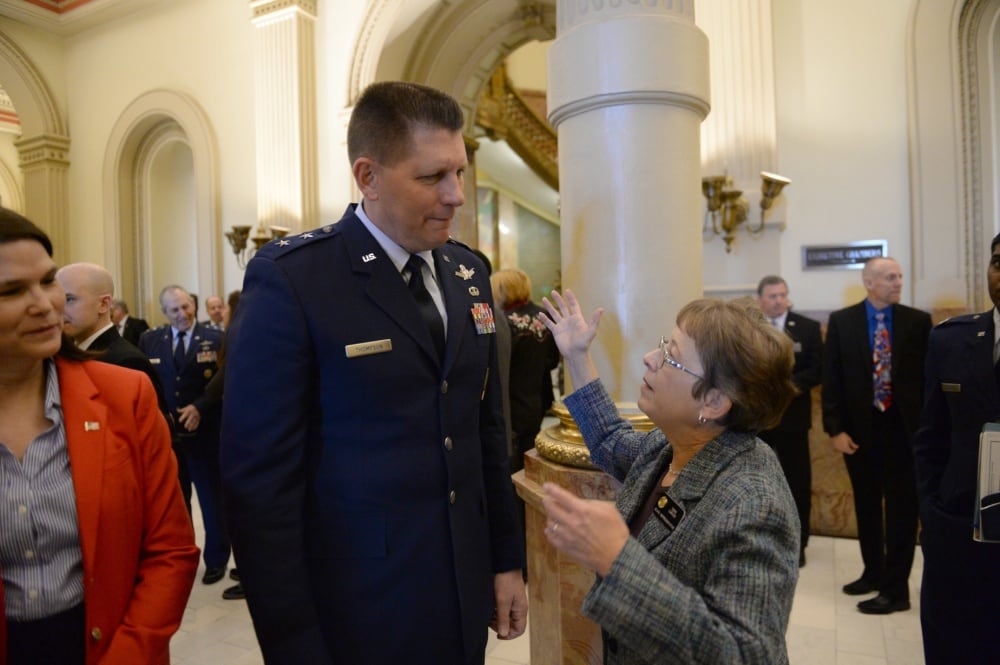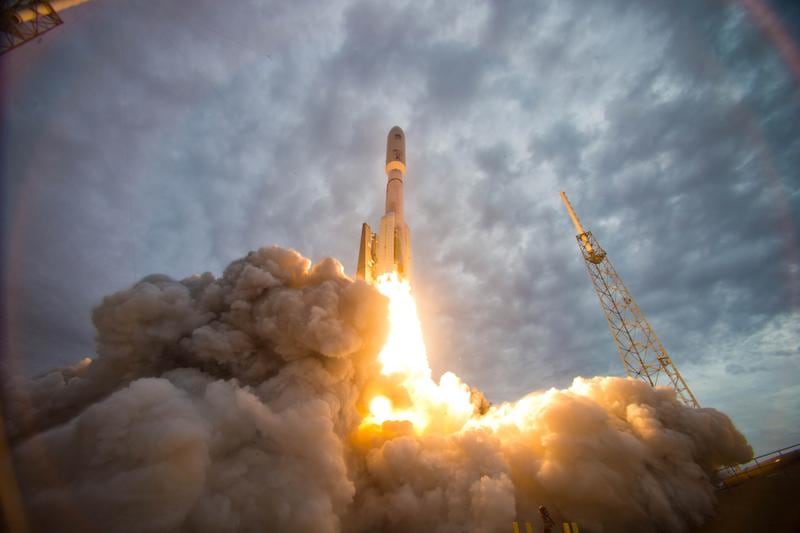WASHINGTON — The position of principal Department of Defense space adviser is officially dead, with Air Force Secretary Heather Wilson having vacated the role this month. What comes next is still up in the air, as the Pentagon is still undecided on how to oversee space policy and modernization and who is best equipped to handle those issues.
The 2018 defense authorization bill signed by President Donald Trump on Dec. 12 terminated the PDSA role customarily held by the Air Force’s civilian head, giving a 30-day grace period for Wilson to wrap up her responsibilities and for Deputy Defense Secretary Patrick Shanahan to figure out who would step in and take over.
RELATED

But that deadline has come and gone without a successor being named, leaving the Pentagon with a space leadership gap and an uncertain future for the PDSA office.
“I think ultimately, you need someone who has control over both requirements and money. That’s the only way I think you’re going to enable a more cohesive and agile approach to national security space,” said Brian Weeden, director of program planning for space policy thinktank Secure World Foundation and a former Air Force officer working in space situational awareness.
Todd Harrison, a space and budget expert with the Center for Strategic and International Studies, said the PDSA position could go unfilled “for a while” without any real negative effects, in part because the role was designed to be weak. The PDSA was responsible with coordinating space activities and programs across the military services, but had no budget authority.
RELATED

“Worst case, [the new position] ends up just being a placeholder until Congress creates a Space Corps,” he said. “Best case... [DoD] could turn this around and say, ‘You know what, we recognize that there are issues here that weren’t being handled as well as they could have been in the past. We’re going to take the bull by the horns and get control of what’s going on here and wrestle out some of these problems.’
“And if they put a strong person in that position and give him the full backing of the deputy secretary and the secretary himself, tell him to go fix what’s wrong and back off that person, they could make a lot of headway here.”
Shanahan has said it’s possible that responsibilities formerly performed by the PDSA could be passed to Mike Griffin, the former NASA administrator who is currently nominated for the new undersecretary of research and engineering (R&E) position. Griffin could be pressed on matters related to space during his Thursday confirmation hearing, when he will testify in front of the Senate Armed Services Committee.
If confirmed, Griffin would be the most logical choice to take over the PDSA role, Weeden and Harrison said.
However, it’s difficult to say whether R&E has the authorities needed to make broad change to the whole of the national security space enterprise, Weeden argued, noting that the intelligence community has largely been left out of the space reorganization debate. The National Reconnaissance Office, for instance, oversees about half of all national security space assets.
“I think the big question is whether we’re talking about authority over just Air Force space activities, or national security space writ large. So far, much of the debate seems to have focused on just the Air Force,” he said.
Harrison said that the new advisory position could be strengthened simply by virtue of being placed under the office of the secretary of defense rather than one of the military services.
“There’s an inherent conflict of interest. The secretary of the Air Force has to be fighting for more than just space, and it’s hard to distinguish when you’re in dual roles like that … and space programs are competing for resources with air programs.”
Another major question is what happens to the PDSA staff directorate, which was established in 2015 to support the then-newly-created space adviser position.
While at least some of those employees could be transferred to support the new adviser, there are congressionally-mandated limits on how many civilian and military personnel can be assigned to the Pentagon. That means that there can be no growth in staff, which could be a problem if employees working for the PDSA directorate also need to be maintained on their respective services’ space policy teams.
Changes to the makeup of the PDSA office might not be an issue, at least in the eyes of Congress, Harrison said.
“It’s probably not going to make some members of Congress very happy if you literally just move the office with all of the same people. They probably want to see some change,” he said.
But between the changes to the PDSA directorate and Congress’ termination of the service’s headquarters space directorate or A11, the Air Force will certainly have to do some reshuffling of its Pentagon-based space billets.
“Right now all those people — and everyone at A11 — have no home, and possibly no job,” Weeden said.
RELATED

The Air Force was in the process of standing up the A11 office inside the Pentagon, with Maj. Gen. David Thompson nominated for the deputy chief of staff for space operations and a number of billets set aside as staff.
On Tuesday, the service confirmed that the A11 office had been disbanded. Instead, it hopes to create the position of vice commander of Air Force Space Command, which would be based at the Pentagon instead of AFSC’s headquarters at Peterson Air Force Base, Colo.
“Individual personnel who were identified to form the initial cadre of the A11 will be realigned as part of the restructure and are in the process of being finalized,” an Air Force spokesman said in a statement. “Regardless of the organizational structure, the Air Force will continue to integrate, elevate and normalize space operations in order to ensure we can deter and, if necessary, prevail in a war that extends to space.”
Aaron Mehta in Washington contributed to this story.
Valerie Insinna is Defense News' air warfare reporter. She previously worked the Navy/congressional beats for Defense Daily, which followed almost three years as a staff writer for National Defense Magazine. Prior to that, she worked as an editorial assistant for the Tokyo Shimbun’s Washington bureau.








